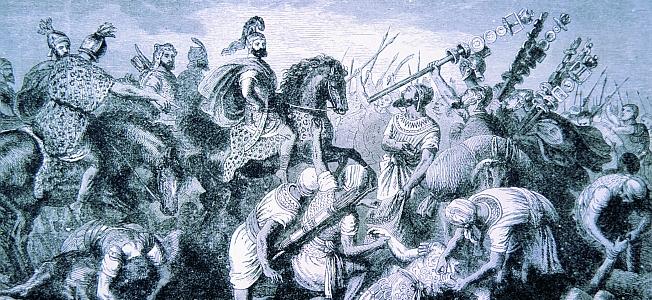Which best describes why Rome went to war with Carthage?
Which of the following best explains why Rome fought Carthage? Rome feared Carthage would try to conquer Italy and add it to its empire.
- Best Friends Become Strangers, How Does A Best Friend Become A Complete Stranger
- Best Weapons For Excalibur Warframe, Best Melee Weapon For Excalibur
- Your The Best Around Remix, You'Re The Best By Joe Esposito
- Best Fender Amp Clones : Other Amps : The Gretsch Pages, 4 Of The Best Fender Tweed Amp Clones
- Where Is The Best Pizza Wilmington Nc ? Top 10 Best Pizza In Wilmington, Nc
Why are the wars with Carthage called Punic Wars?
Between 264 and 146 B.C.E., Roman and Carthaginian forces fought a series of wars known as the Punic Wars. Phoenicians (Phoinix in Greek, Poenus from Punicus in Latin) were the people who founded Carthage.
Bạn đang xem: Which Best Describes Why Rome Went To War With Carthage ?

Where did Rome salt the earth?
Carthage
Did you really have to salt the earth?
They ask, “Did you really have to salt the earth so nothing would ever grow again?” in The Simpsons.
How do you kill soil so nothing will grow?
Two cups of regular table salt and one gallon of white vinegar will kill any plant life in your walkways, driveways, or other areas where you don’t want it to grow again. Put the salt in a container with a capacity of at least one gallon.
Why must land not be kept bare?
Xem thêm : The 10 Best Clubs In Providence Nightlife, Nightlife In Providence
Erosion is most likely to occur in a field’s bare spots. As there is nothing to keep the soil in place, it can be easily picked up and moved. If the fields aren’t planted for the winter, the soil is more prone to erosion.
Can plants live without salt?
But how long do you think a plant could survive if it had no access to salt? The reply is short and to the point. Only when a nutrient is in the form of an ionic salt can a plant absorb it.
What would happen if there were no fertile soil left on the planet?
If there wasn’t soil on Earth, plants couldn’t be grown, and without trees, people wouldn’t have access to food, shelter, and other necessities.
What would not be here if there was no soil?
Without soil, it would be impossible to cultivate plants, and without cultivating plants, it would be impossible to plant trees from which to harvest food and other necessities.
Look here:Is It True That The Paletest Ink Is Better Than The Best Memory? It Originates in Ancient China?
Do we only have 60 harvests left?
Yet, the claim of “60 harvests” can be easily disproved. Almost all soils that were managed conventionally lasted longer than 60 years. For soils, the median time it took to thin out was 491 years. More than half lived more than a thousand years, and nearly twenty percent lived more than ten thousand.
How many harvests do we have left?
Xem thêm : You Are The Best Part Of Me Lyrics, Landon Austin
However, much more work needs to be done, both domestically and internationally. It can take up to a thousand years to build just three inches of topsoil, but the United Nations’ Food and Agriculture Organization predicted six years ago that the rate of soil degradation was such that the world might only have sixty harvests left.
Can soil save the planet?
In a state of optimal health, soil can store that carbon for a very long time, preventing it from being released into the air. That means more carbon in the soil, where it can benefit humans, plants, animals, and microbes, and less carbon in the atmosphere, where it can contribute to climate change.
How much topsoil is left in the world?
Using the current degradation rates, we have about 60 years of topsoil left, according to a rough calculation. Forty percent of the agricultural land on Earth is either degraded or seriously degraded, with the latter classification indicating that more than 70 percent of the topsoil (the layer that plants need to thrive) has been lost.
How many years of soil are left?
ROMA (Thomson Reuters Foundation) – According to a senior UN official, it takes 1,000 years to generate three centimeters of top soil, and if current degradation rates continue, all of the world’s top soil could be gone within 60 years.
What 5 things make up soil?
Minerals, organic soil matter, microorganisms, air, and water are the five main components of soil.
How do we destroy soil?
Soil erosion can be caused by the wind or by extreme weather, but human activities like overgrazing, overcropping, and deforestation also contribute. When farmers keep an excessive number of grazing animals on their land, a condition known as overgrazing occurs.
What will happen if our country’s soil continues to degrade?
It’s important to note that soil degradation leads to a substantial decrease in farmable land because it speeds up the overall rate of land degradation. Most methods of crop production end up destroying the natural soil structure that allows for agriculture, leading to a loss of topsoil.
Nguồn: https://directmarketingcenter.net
Danh mục: Best









